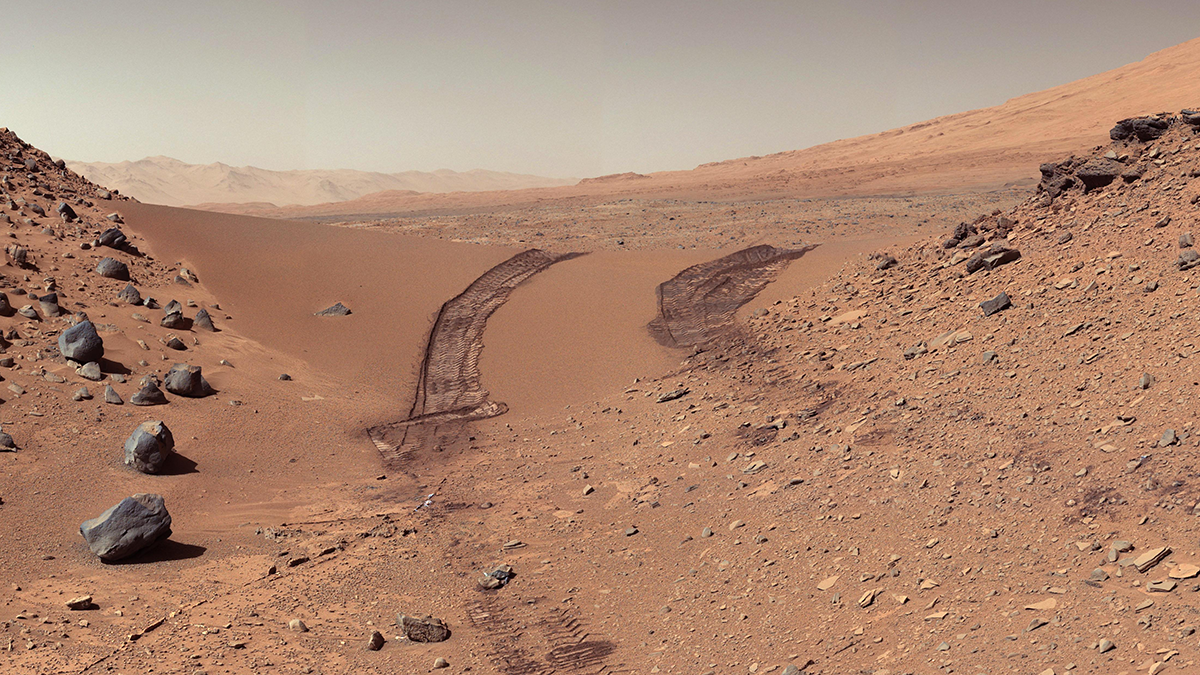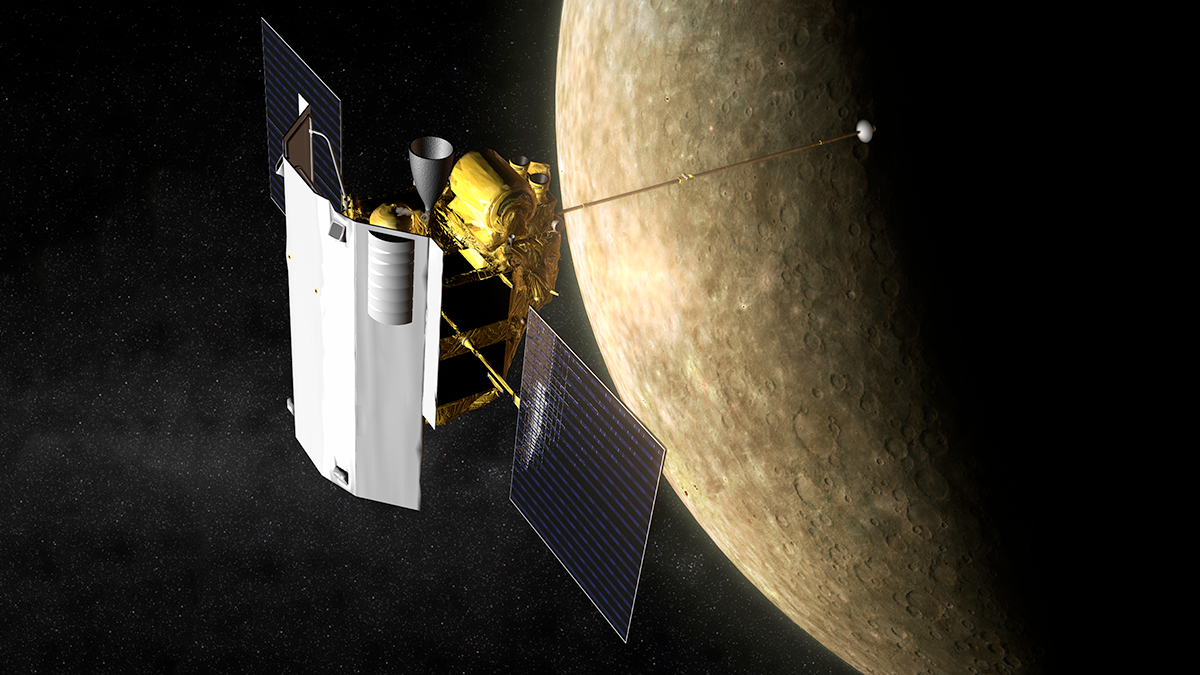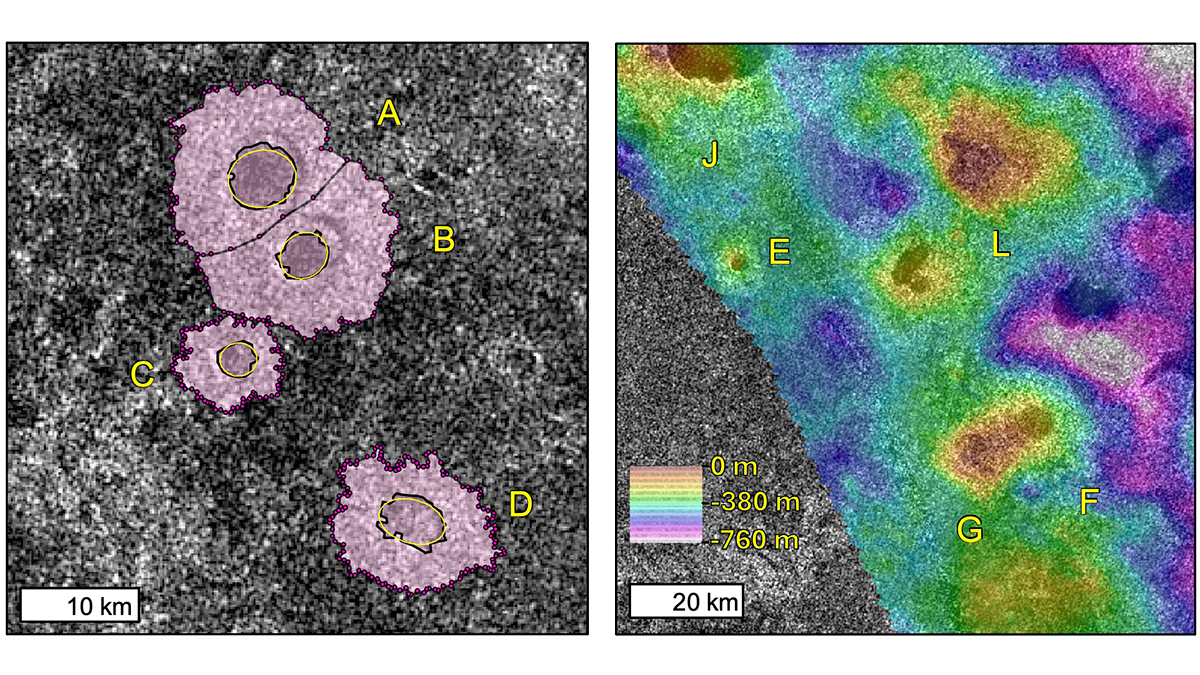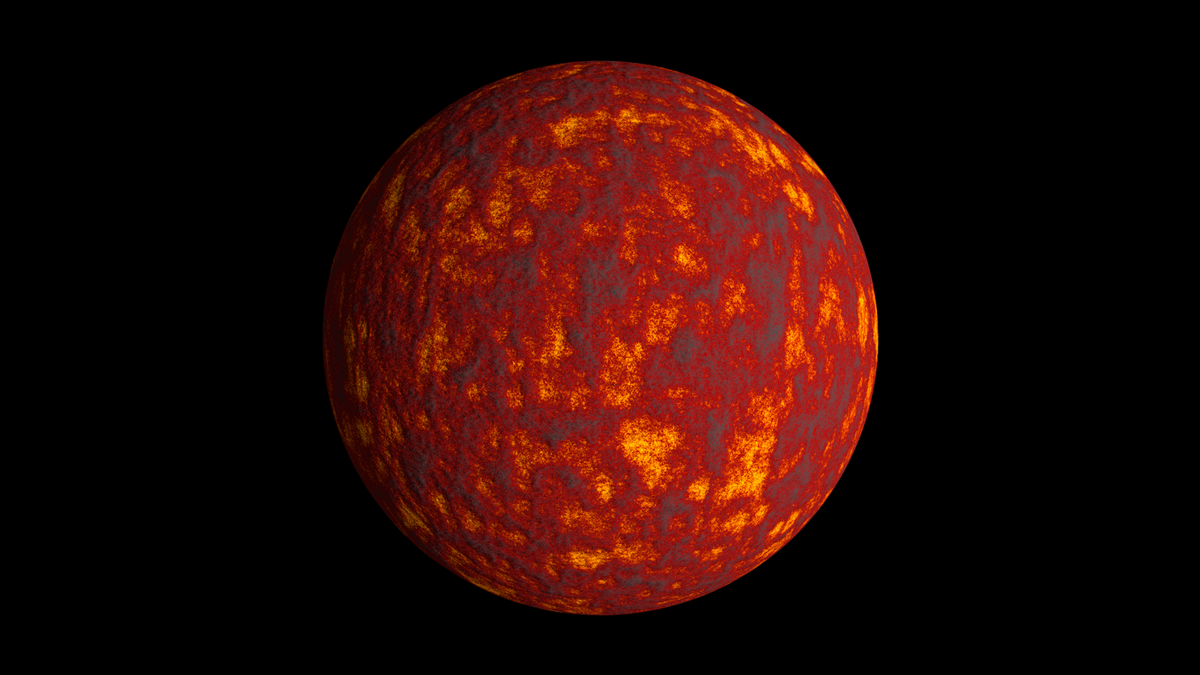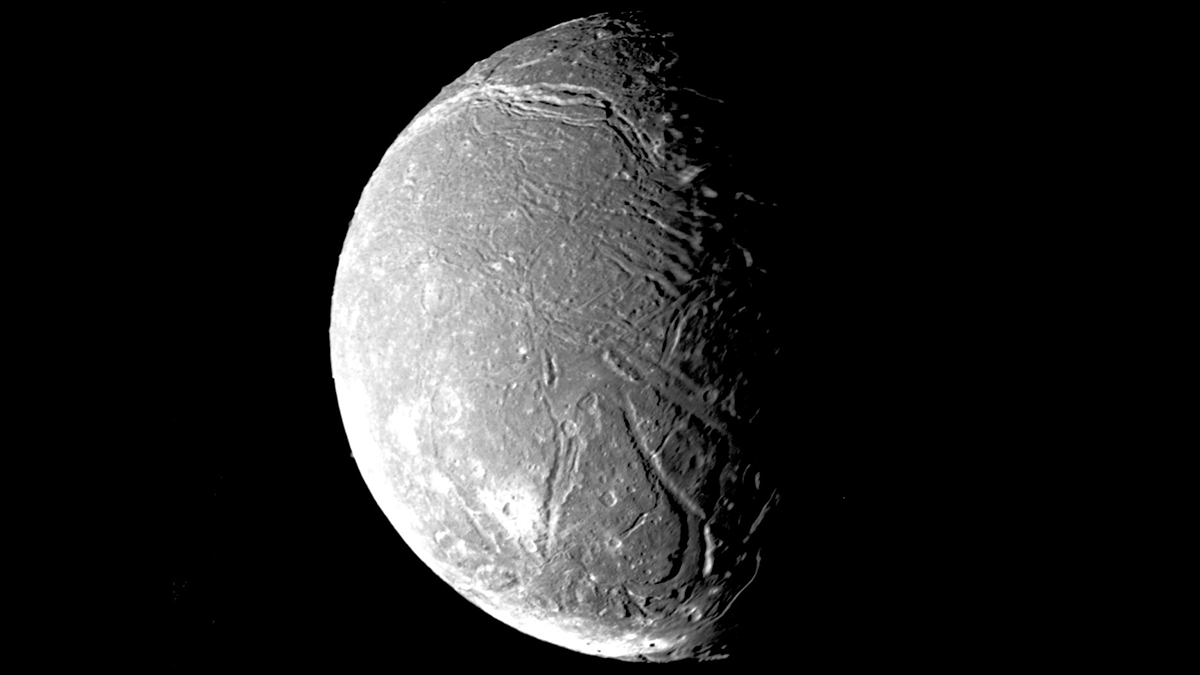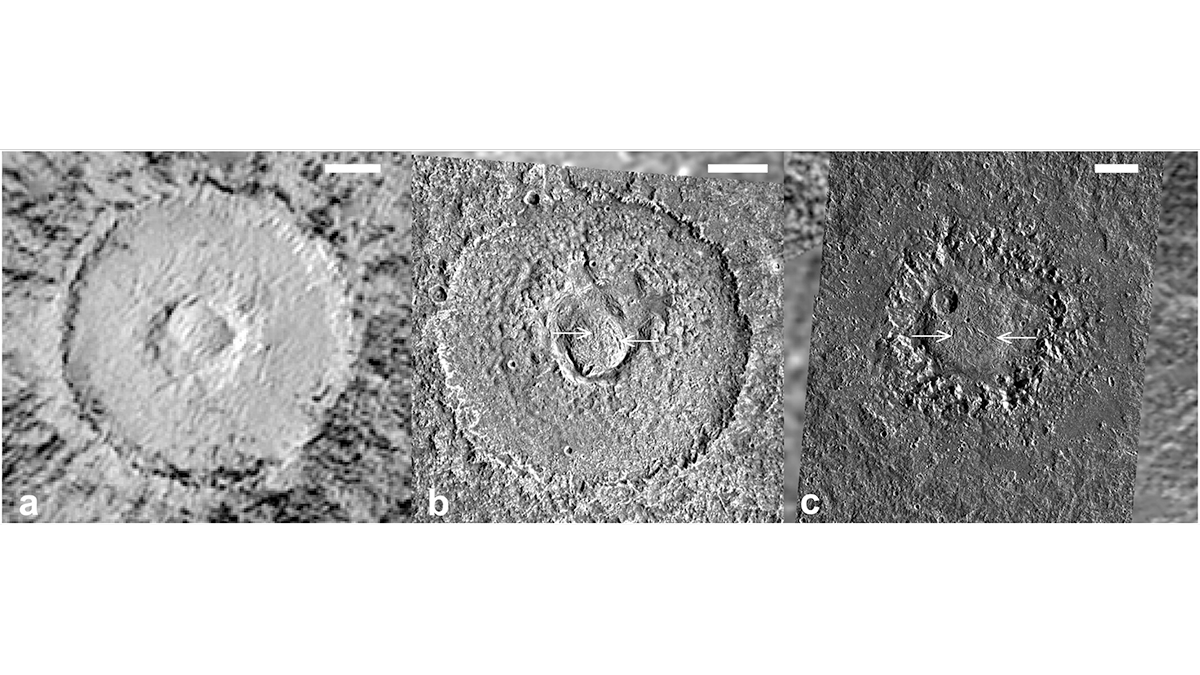Fluid-rock interactions on ancient Mars may have produced abundant magnetic minerals that preserved unusually intense records of the planet’s now-extinct magnetic field.
Journal of Geophysical Research: Planets
Mercury’s Hollows may be Young and Active
The first machine learning-derived global-scale survey of Mercury’s hollows suggests they are young features that may be active and will continue to evolve.
The Explosive Origins of Titan’s Rampart Craters
In a new study, volcanic explosions are explored and modeled to understand the possible origins of rampart craters on Titan and determine whether their formation can source atmospheric methane.
The Future of Martian Paleomagnetism
Samples collected by the Perseverance Rover have great potential for providing insights into the history of Mars’ magnetic field.
How an Ocean-Sized Lake May Have Formed on Ancient Mars
The catastrophic collapse of Mars’s atmosphere may have melted its polar ice cap, creating an ice-covered southern sea.
Timing the Global Expansion on the Moon
A new analysis of the relation between randomly oriented linear gravity anomalies and two large craters on the Moon implies that the gravity anomalies formed over a long period of time.
How Did Magma Oceans Evolve on Early Earth and Mars?
New insights into the early timelines of rocky planets are emerging, thanks to clues from iron chemistry and primordial atmospheres.
Investigating Origins of CO2 Ice on Uranian Moons
A new study investigates the role of volatile migration in the unique Uranian thermal environment.
New Moonquakes from Old Data
Almost 50 years after they were turned off, the Apollo seismometers still have secrets to reveal.
Unveiling the Origins of Dome Craters on Ganymede and Callisto
Large craters with broad central domes are a unique crater morphology on Jupiter’s largest icy moons: Ganymede and Callisto. A new study examines how remnant impact heat may lead to their formation.

